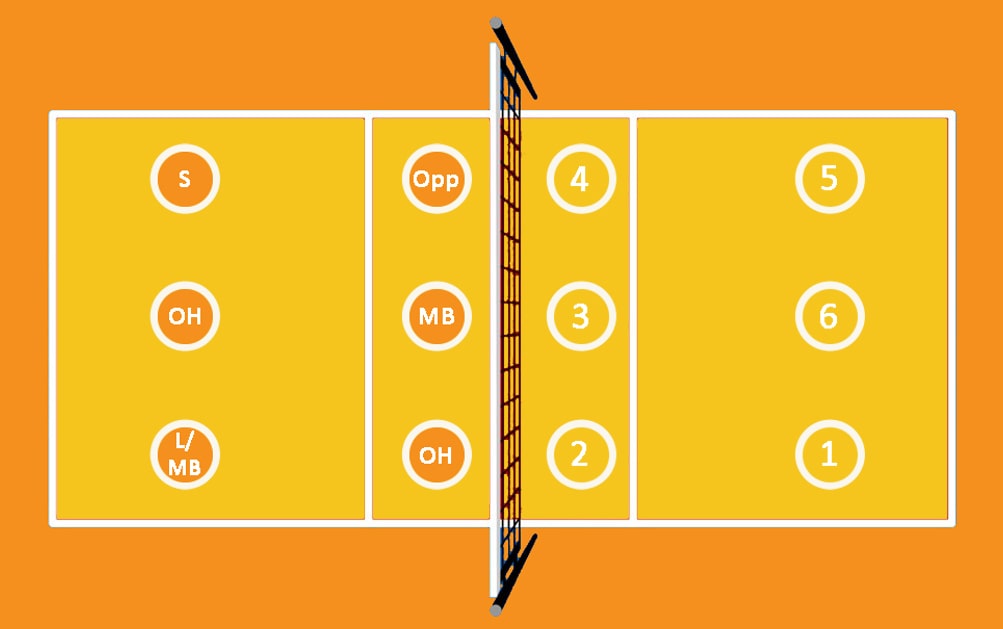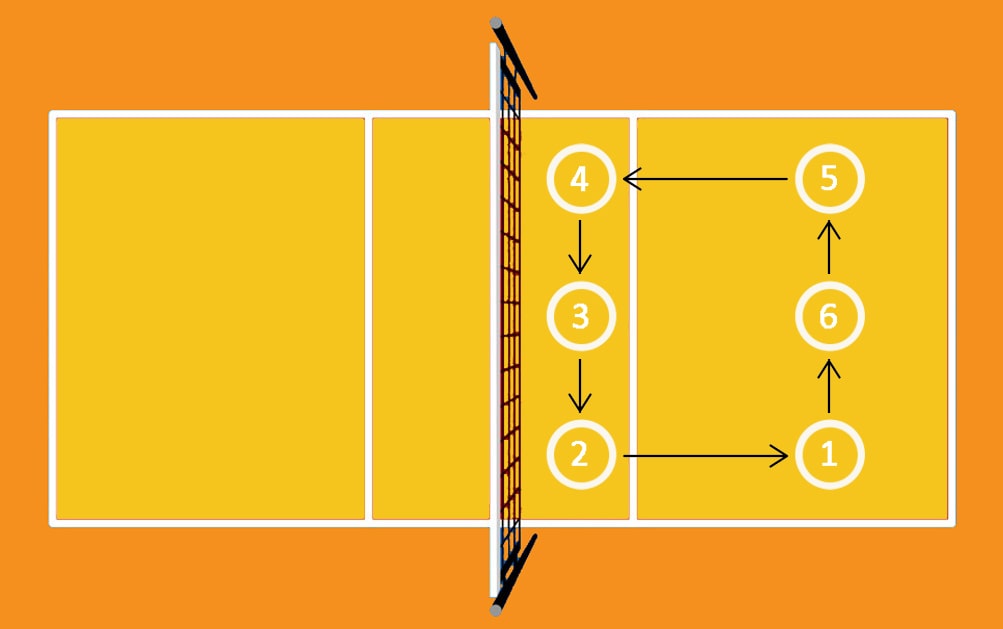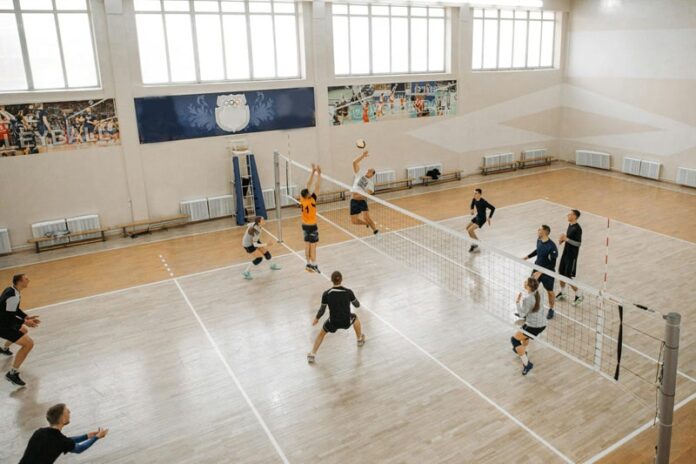Volleyball is a fast, strategic sport. Each player must fulfill a specific role on the court. Understanding these positions is crucial for team success and effective gameplay. This guide will examine each of the volleyball positions. It will cover their roles and contributions to the team’s performance.
Volleyball Positions and Their Roles
In volleyball, each of the six players has a position. Each has distinct responsibilities. The main volleyball positions are setter, outside hitter, opposite hitter, middle blocker, libero, defensive specialist, and serving specialist. Each position plays a vital role in both offensive and defensive plays.

Setter
The Setter is often considered the quarterback of the volleyball team. This player sets up the ball for attackers. They must make quick decisions and direct the team’s offense. Setters need to have quick decision-making abilities, precise ball-handling skills, and strong communication skills. They usually stand near the net. Setters are ready to receive the second touch after the ball is passed. They must move quickly to ensure they can set the ball accurately to attackers.
- Orchestrating the offense by delivering accurate sets to the hitters.
- Deciding which hitter to set the ball to based on the situation.
- Executing strategic plays and keeping the defense off balance.
Outside Hitter (Left-Side Hitter)
The Outside Hitter is a versatile player. They play both offense and defense. They are responsible for attacking, blocking, and passing. To excel, an Outside Hitter must have strong attacking skills, effective blocking, and consistent passing. Positioned on the left side of the court, they need to be ready to hit the ball from the front row and defend in the back row.
- Leading the attack from the left side of the court.
- Serving as a primary passer in serve-receive situations.
- Providing a strong defense through blocking and digging.
Opposite Hitter (Right-Side Hitter)
The Opposite Hitter, or Right Side Hitter, is vital for offense and defense. Often serving as the backup setter, they need to be strong blockers. This position needs strong hitting, reliable blocking, and versatility in both rows. Opposite Hitters are on the right side of the court, opposite the Setter. They play a key role in blocking the opposing team’s Outside Hitter.
- Attacking from the right side of the court provides a balanced offense.
- Blocking the opponent’s outside hitter.
- Occasionally stepping in as a backup setter.
Middle Blocker (Middle Hitter)
The Middle Blocker must block the other team’s attacks. Then, they must quickly switch to offense. This position requires quick reflexes, strong blocking, and effective hitting from the middle of the court. Middle Blockers play in the center of the net and need to move quickly to block attacks from both sides of the court.
- Leading the team’s blocking efforts by shutting down attacks at the net.
- Providing quick, effective attacks through fast sets.
- Transitioning rapidly between blocking and hitting.
Libero
The Libero is a defensive specialist who cannot attack the ball above the net’s height. The Libero wears a different-colored jersey. He can replace any back-row player without notifying the officials. This position requires great defense, passing, and digging. It also needs agility and quick reflexes. Liberos play in the back row. They are the team’s main passers, providing accurate passes to the Setter.
- Enhancing the team’s defense with consistent digs and passes.
- Acting as the primary passer on serve-receive.
- Coordinating the back-row defense and covering tips and roll shots.
Defensive Specialist
The Defensive Specialist, similar to the Libero, focuses on defense. However, unlike the Libero, they can serve and play any back-row position. This player must excel at defense. They must be good at digging, passing, and reading the opponent’s attacks. Defensive Specialists are in the back row. They are key to the team’s defense.
- Reinforcing the back-row defense through effective digging and passing.
- Serving strategically to disrupt the opponent’s offense.
- Providing depth in the rotation by filling in for other back-row players.
Serving Specialist
The Serving Specialist is brought in specifically to serve. This player often has a strong, consistent serve. It can pressure the other team. Serving Specialists impact game strategy. They use serves to disrupt the opponent’s offense. They typically serve. Then, they may be substituted for a player who can contribute more in other areas of the game.
- Delivering powerful and accurate serves to challenge the opponent’s serve receive.
- Scoring points directly through aces or creating opportunities for the defense.
- Being substituted out after serving to bring in a player specialized in other skills.
Rotational System
Understanding the rotational system is key to grasping how volleyball positions work. Each player rotates clockwise after winning a point on the opponent’s serve. This ensures they play in both the front and back rows during the game. This rotation changes player roles and responsibilities. It affects their tasks and positioning on the court. The rotation system requires players to be adaptable. They must be ready to perform in different positions during the match.

Conclusion
Each volleyball position is unique and essential for a well-rounded team. From the setter’s playmaking to the libero’s defense, every role helps the team succeed. Knowing these volleyball positions helps players communicate and anticipate plays. It also helps them execute strategies. This shows the importance of teamwork in volleyball.







